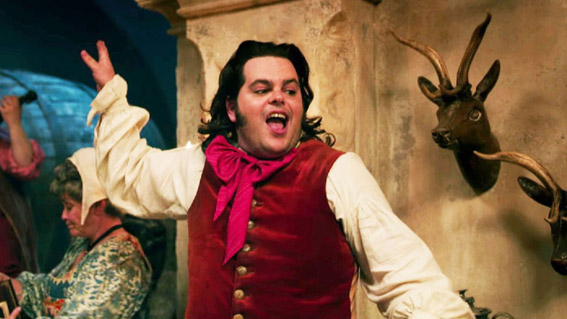“A significant turning point for the Disney corporation would be to include real depictions of LGBT+ people instead of ‘comedic’ stereotypes.”
Back in the 1950s and ’60s an actor called Tony Randall regularly played a stock character in Hollywood romantic comedies. The friend of the handsome leading man (often played by Rock Hudson), Randall’s character was often slightly effeminate, a bit neurotic, and not sexually interested in women. It was never said out loud, but the character was the resident gay comedy sidekick, and since the dawn of pictures, he’d been part of the cinematic landscape.
Over half a century later and things have changed in Hollywood a lot. Gay characters are two-a-penny, and last year we even had a major-release teen romance featuring a gay lead, Love, Simon. Having said that, some parts (well one part) of the movie industry is still mired in 1950s depictions of gays (if it dares to depict gays at all), and sadly that’s because most of its output is aimed at children.
“Disney has always been incredibly supportive of the LGBTQ community,” a ‘source’ told The Sun in a piece about the casting of Jack Whitehall (pictured above) as an openly gay character in the forthcoming action-romance from the studio, The Jungle Cruise. The article described the fact that his character (a brother of the leading lady) is a “fun, effete” man who “makes clear he has no interest in women,” as a “significant turning point.”
This, of course, is because up until now Disney has been the only studio in Hollywood never to have had an out gay character. Last year the Internet was jumping up and down with excitement because the live action version of Beauty and the Beast presented the first “exclusively gay moment in a Disney movie,” according to the film’s director, Bill Condon. But the “gay moment” that Condon referred to was a blink-and-you’ll-miss-it shot in the film’s final seconds when LeFou, the villain Gaston’s sidekick, danced with a man in the final ball sequence, just before the credits rolled.

Throughout Beauty and the Beast, there were oblique references to LeFou’s sexuality. He was portrayed as having a kind of unrequited crush on Gaston and looking longingly at him during the song ‘Gaston’. In this respect, LeFou was another stock character out of the 1950s Hollywood playbook, the sissy, used mostly to get a quick laugh out of the audience.
The casting of Jack Whitehall as a camp sidekick with no interest in women is not a “significant turning point” for Disney. A significant turning point for the corporation would be to include real depictions of LGBT people instead of ‘comedic’ stereotypes.
The gay depictions that Hollywood created in an era of repression and silencing had untold effects on the psyches of gay people, both young and not so young. By removing our humanity and reducing us to a joke, the movie industry effectively created stereotypes that gave straight people licence to laugh, look down on, and hurt us.
The Disney corporation has a responsibility to the children who love its movies so much. Many of those children are gay, many of them are being brought up in households where they’re told it is wrong to be gay. Disney, with its ethical message of being the best person you can be, rather than showing queer children that they are good and valuable, is reinforcing the stereotypes that harm queer children.
Jack Whitehall, a straight man camping it up as a comedy sidekick, is about as distasteful as it gets. Disney may make lots of money from the LGBT fans who adore its output (I’m a gay man who grew up adoring Disney myself), but it continues to steadfastly refuse to put its money where its mouth is. The ‘gay’ character Whitehall will be playing is not gay at all. He’s just a creation made by and for straight people, who are afraid to include real gay characters because they equate gay with being harmful to children.
It’s not the 1950s, Disney. It’s 2018. Get over it.
© 2018 GCN (Gay Community News). All rights reserved.
